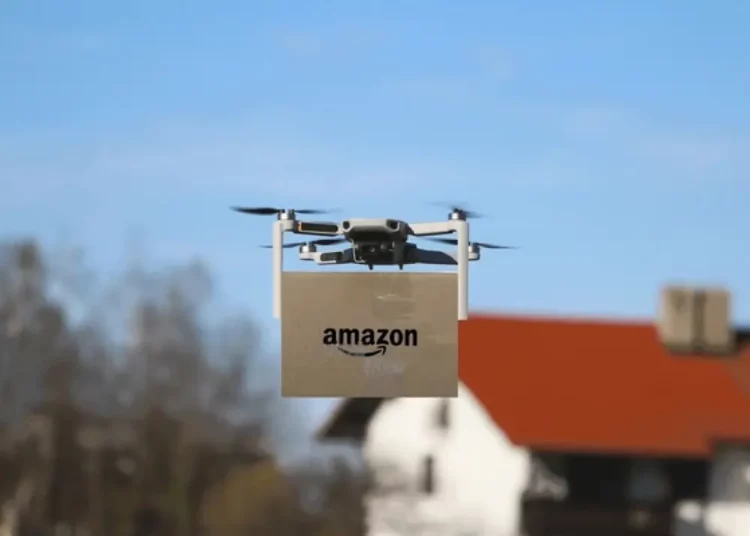After a two-month pause, Amazon has resumed its Prime Air drone delivery service in Tolleson, Arizona, and College Station, Texas. The company temporarily halted operations due to safety concerns but has since implemented crucial upgrades to its drone technology, ensuring a more reliable and secure delivery system.
Amazon’s Prime Air program has been in development for over a decade, with the ambitious goal of delivering packages to customers in 30 minutes or less. However, progress has been slow, and the company has faced multiple challenges, including regulatory hurdles, operational limitations, and community concerns.
The latest service suspension was caused by a seemingly minor but critical issue—dust particles interfering with the drones’ altitude sensors, particularly in Arizona’s dry climate. While Amazon emphasized that its drones “never experienced a safety event” during commercial operations, the company proactively paused flights to refine its technology.
“As a result of extensive testing, including over 5,000 test flights, we have complete confidence in the underlying safety of the drone,” Amazon stated in its update.
To ensure safer and more efficient operations, Amazon introduced its latest drone model, the MK30. This new version is designed to be quieter than previous models and can operate in light rain—an essential upgrade following reports of software malfunctions in wet conditions.
The company also conducted rigorous safety tests, including simulations where obstacles such as children’s toys were placed in landing zones to assess the drones’ detection capabilities. Additionally, the drones were subjected to high-stress failure scenarios involving simulated malfunctions of motors, propellers, and flight computers.
“When we test the detect and avoid capability, we’re flying an airplane at the drone,” said Adam Martin, head of Prime Air’s flight test and safety division. “We’ll fly a helicopter at it.”
This level of testing ensures that the drones can handle real-world scenarios and unexpected challenges, improving their reliability in commercial use.
Despite these advancements, Prime Air still faces hurdles, particularly regarding community acceptance. Some residents in College Station have expressed concerns about the noise levels of drone deliveries. Mayor John Nichols even urged the FAA to deny Amazon’s proposed expansion in the area.
“One resident described the sound as ‘like your neighbor runs their leaf blower all day long,’” reported Wired Magazine. In response to these concerns, Amazon has announced plans to relocate its drone hub further away from residential areas later this year.
Amazon has set a bold goal of delivering 500 million packages annually by drone by the end of the decade. However, its operations remain limited to just two U.S. cities—College Station and Tolleson—after closing its test site in Lockeford, California, last year.
The company has also hinted at expanding internationally, with plans to enter the U.K. and Italy. While competitors such as Alphabet’s Wing and Zipline have already completed hundreds of thousands of drone deliveries, Amazon is still catching up.
With the MK30 now back in the skies and Amazon committed to improving safety and efficiency, the company is determined to make drone delivery a mainstream reality. However, significant hurdles—both technical and regulatory—remain on the path to achieving its ambitious vision.











